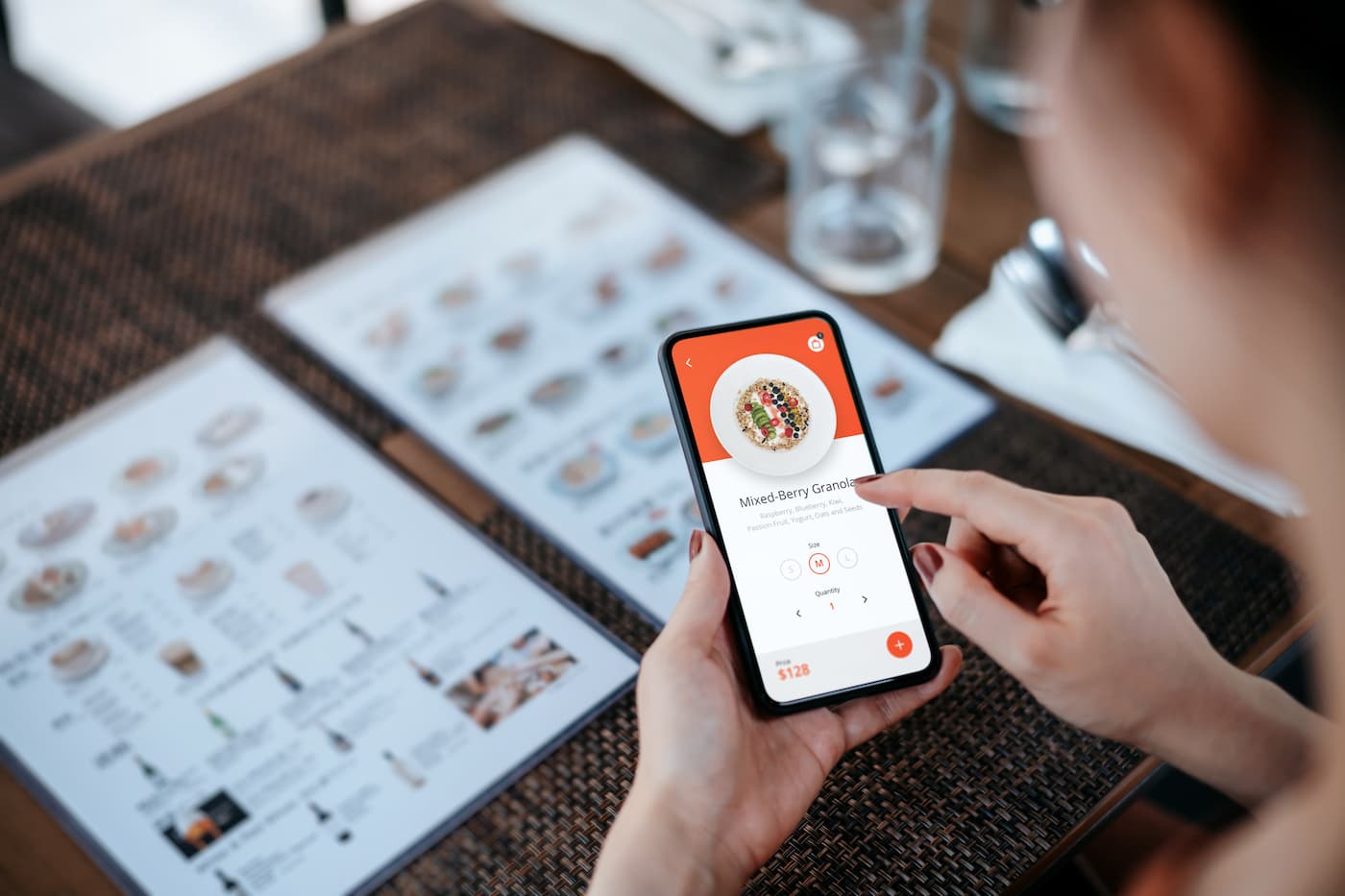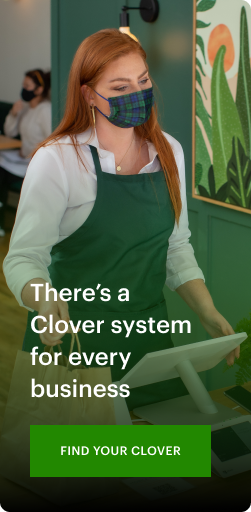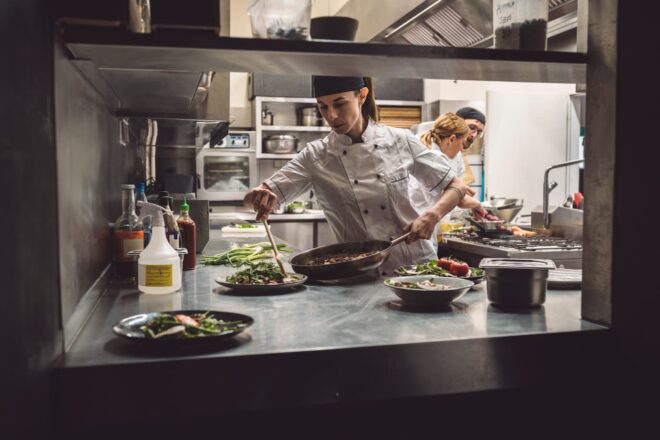How to create a restaurant website
Editorial Team
7 min read
Time and again, research underscores the crucial role that websites play in long-term restaurant success. In fact, 90% of consumers check out restaurant websites before deciding where to eat, while 33% of them won’t eat at restaurants with fewer than four stars.
Here’s how to create a restaurant website that entices customers to visit or order from your establishment, plus some tips on how you can keep improving your site throughout the year.
What makes a successful website?
There is no one “perfect way” for how to build a website. If you Google what makes a strong website, you will most likely find 100+ different ways to build one. This information overload can often be a roadblock to even starting the website process, let alone creating an effective one.
Through years of research and industry experience, experts have distilled great websites down to four essential elements:
1. Easy to manage content
Content isn’t just words like this blog post. It also includes things like business hours, menu items, and special offers. To keep your online following up-to-date, you’ll need to make sure not to let your content get outdated. Periodically updating content also helps increase your website’s SEO.
2. Search Engine Optimization (SEO)
Search engines are designed to present users with the most relevant and accurate content in relation to a query (such as “best restaurants near me”). A website built to meet SEO criteria is essential in appearing higher in searches relevant to your restaurant.
3. Mobile friendliness
About 57% of consumers prefer to order directly from a restaurant’s website or mobile app, so it’s important that your website is easy to navigate from all devices. Fast page speeds, the ability to view menu items easily, and seamless online ordering are all key to keeping your mobile customers coming back for more.
4. Modern design
Customers don’t just make decisions based on the quality of service, but also based on your brand. Your website is a digital storefront telling users who you are and what they can expect. If they see an outdated website, they may assume your food or services match. A modern website and strong brand are critical in helping with their purchasing decision.
While there are many elements that comprise a strong website, focusing on these four website best practices can help set you on the path to success.
How to choose a website platform
All websites have to be built, but that doesn’t necessarily mean you have to be the one to build it. You have several options when it comes to building a restaurant website and putting that technology to use.
Out-of-the-box solutions
Services such as BentoBox help entrepreneurs construct an internet presence from scratch using templates and easy functionality that answers to the needs of various restaurant types. These templates are designed for optimizing your restaurant website, so you can boost sales as quickly as possible. No need to understand code or try to learn design in your spare time. Think of this as a turnkey solution.
Website builder platforms
These platforms usually have a combination of WYSIWYG (what you see is what you get) drag-and-drop editors and more complex offerings for owners/operators interested in how to learn about web development and site construction. There is some ease-of-use with these platforms, but you’ll likely have to find or even buy certain options piecemeal, which can add up in terms of time and money.
Custom–built sites
You can hire a professional website developer to create a site built to your specifications. While this can result in a beautiful website, this approach might not be practical or economical for small businesses given the other, simpler solutions that already exist.
How to design a restaurant website
There are a lot of restaurant website design tips available for those who want to “DIY” their website, but first, you need to tackle the basics.
- Outline page layout and prepare content: Your restaurant website needs a homepage, an about us page, a contact page, and a menu page—at bare minimum. Other content, such as company history and community pages, are bonuses, but you don’t necessarily need them to launch your website.
- Focus on simple navigation: Make it easy for customers to find what they need. Use a simple and highly visible navigation bar to list pages, and give pages names that make sense.
- Highlight your menu and ordering options: You already know that people check restaurant websites before ordering, so it only makes sense to upload your menu and link to third-party ordering options from your site. This way, customers can simply click through and place their orders for delivery or pickup.
- Use high-quality photography: Your website needs beautifully lit shots of your dishes to help entice guests to visit your restaurant or place an online order. Many of the latest smartphones come with high-quality cameras that can help you capture images just like the pros. You don’t need to invest in expensive equipment or hire someone to photograph food well.
- Ensure the location is included and correct: List all contact information (addresses, phone numbers, major cross streets, etc.) clearly on your site to help customers find your location easily.
Important restaurant website integrations
Your restaurant website is not an island. There are some key integrations that you can leverage to make your website more functional and to help support your other goals, including increasing traffic, boosting customer engagement, and increasing overall revenue.
Online ordering
When you build your own restaurant website, an online ordering system should be high on your list of must-have integrations. While you can build your own ordering system, that technology may be complex to construct and difficult to manage. A better option may be to partner with a third party that already has a platform that integrates with your existing point-of-sale system.
Social media sharing
Those little Facebook, Instagram, and X widgets on websites are useful because they allow people to instantly share your content with their friends on social media. Make sure your blogs, menu, and promotions are sharable so your fans can help spread the word. Can you say free advertising?
Restaurant point-of-sale system
Your restaurant POS system is a major part of day-to-day operations. The right software and platform can track key data points such as inventory information, customer analytics, sales data, and more. This info can be collected and sorted into various reports to help inform everything from how to staff your restaurant to whether you should turn that one-off special into a standard menu item.
Feedback/form submissions
Guest feedback can be a scary proposition for restaurants. After all, there’s always someone looking to complain about the temperature of their food or that they waited too long to be seated.
The truth is that these bits of feedback are all opportunities to improve operations and better serve your guests. Including a feedback form and other contact methods on your website gives guests a way to let you know what you’re doing right, what you could do better, and what they’d like to see from your brand in the months and years to come.
Ongoing improvements
Restaurant websites are not “set it and forget it” marketing tools. Just because you created an incredible website doesn’t mean your work is done. It’s important to keep your website updated. This includes:
- Updating variable information as it changes, such as operating hours.
- Ensuring all contact information is current.
- Producing new content to keep readers engaged and your site looking fresh and new.
- Working on search engine optimization (SEO) to increase organic online visibility. This might entail hiring a consultant to complete a content audit, engaging freelance writers to populate your blog, and developing relationships with other site owners and influencers to build a network of backlinks to help your authority and Google ranking.
Clover can help you build your own restaurant website
To be competitive and successful over the long term, all restaurants should consider developing websites to attract consumers who are looking for information and a way to make reservations or place orders.
Clover offers a wide range of business solutions that can help you bolster your online presence and ensure your restaurant runs smoothly, even as you scale. That includes a restaurant website and commerce platform, such as BentoBox, that can provide all-encompassing marketing help for restaurants just like yours.
Why wait? Elevate your business and get started with a Clover restaurant POS system today.
GET STARTEDRelated Posts
2022 technology trends to watch in food and beverage businesses
Full Service Restaurants (FSR)
Dining excellence: How to improve restaurant operations
Popular Topics
Stay In Touch
Sign up and learn more about Clover.
Thank you for your subscription!
Recent Stories
- Jewelry store supplies and equipment needed for opening day
- How small businesses can use employee discounts to retain staff
- Tips and tricks for opening an outdoor pop-up restaurant
Please share your contact information
to access our premium content.
Thank you for sharing your contact information.
Download Now





